Watch the video here:
A male lion’s efforts to assert dominance became an amusing spectacle when a young cheetah easily outpaced its pursuit. Ranger Kevan Dobbie and guests witnessed the interesting encounter on a game drive at Mala Mala Private Game Reserve.
Congregation of big cats
According to Kevan, all three of Africa’s big cats–lion, leopard and cheetah–were in the vicinity when the incident occurred. However, we don’t see the leopard in the video.
I see you!
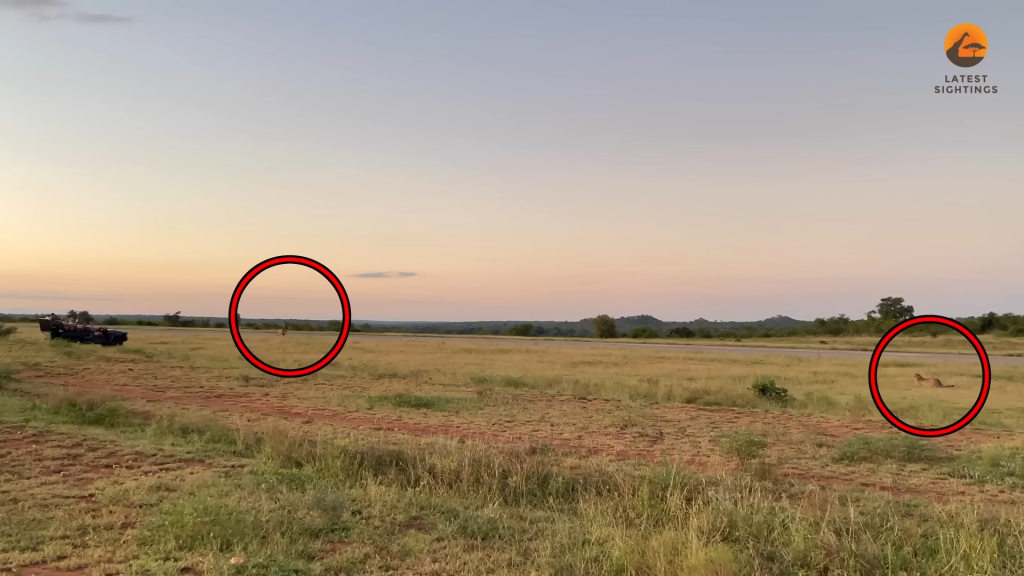
In the video, we join the action to see a lion in the distance, that has spotted a young male cheetah on the reserve’s airstrip.
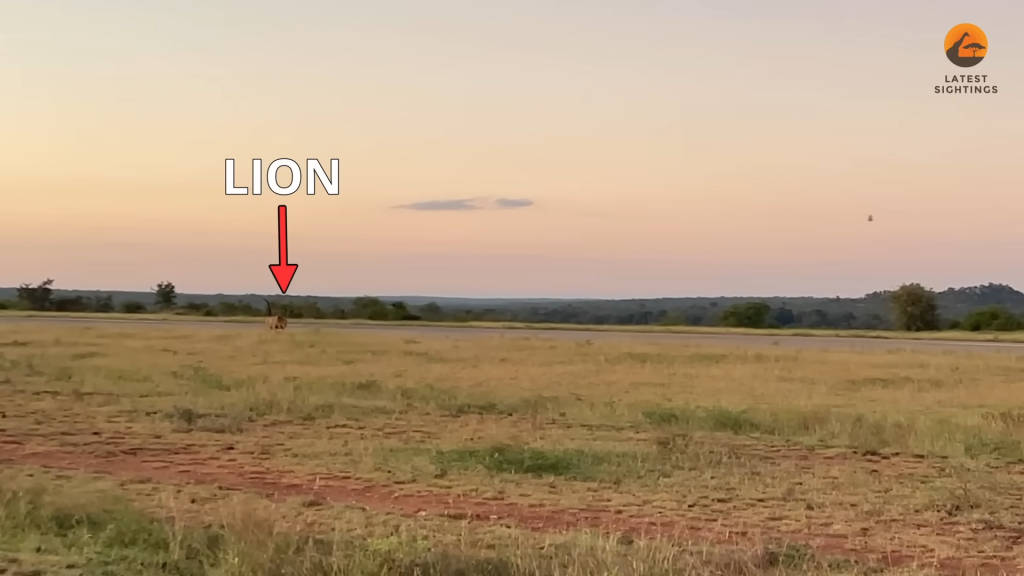
The lion is one of the dominant males of the Ndzhenga pride.
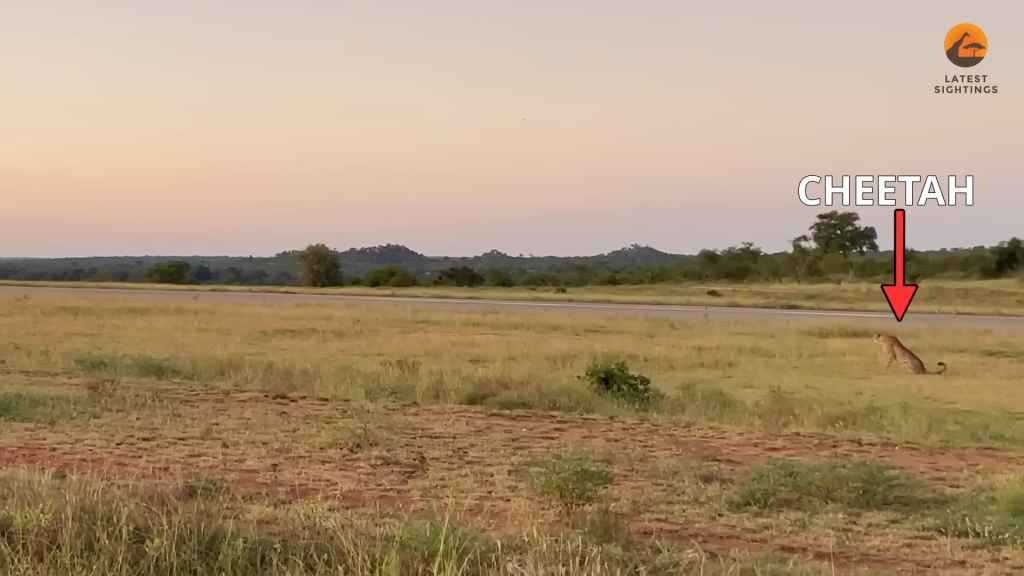
While the cheetah had been seen at the airstrip for several days preceding.
Possessive
Lions are highly territorial, towards their own kind and other predators, which they view as competition for resources.
Accordingly, when the lion spotted the cheetah it made haste to show the smaller cat it was not welcome.
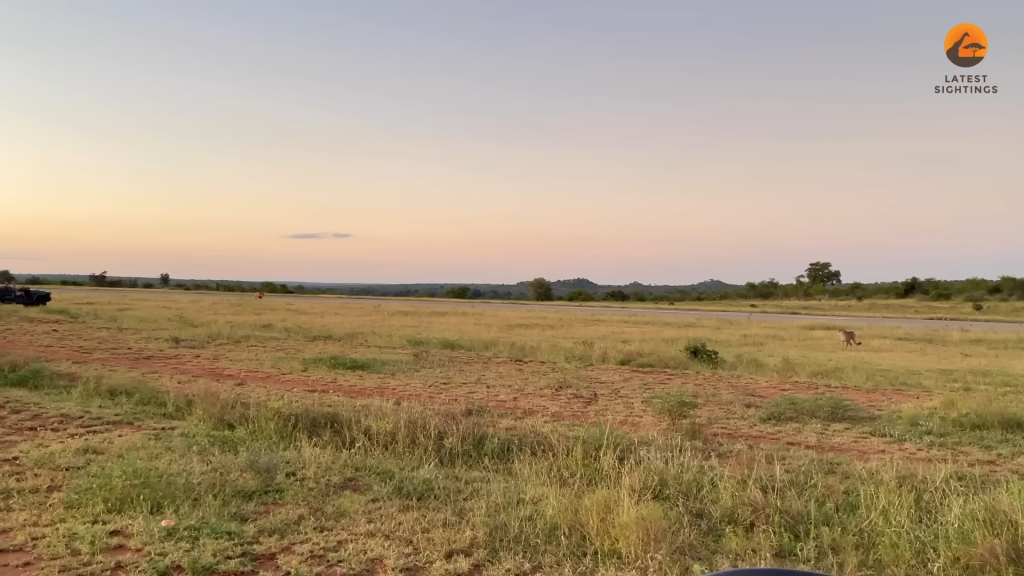
Male lions can weigh up to 230 kilograms, while an adult male cheetah would be lucky to reach 70 kg.
As a result, when the cheetah realises the lion is approaching, it immediately reacts.
Time to scoot

Still a considerable distance from the intruder, the lion charged. As it did, the cheetah turned tail and fled.
Unfair advantage
It is common knowledge that cheetahs are the fastest land mammals, capable of speeds of up to 120 km/h. This, and the fact that the cheetah had a considerable head start meant the cheetah was never really in danger.
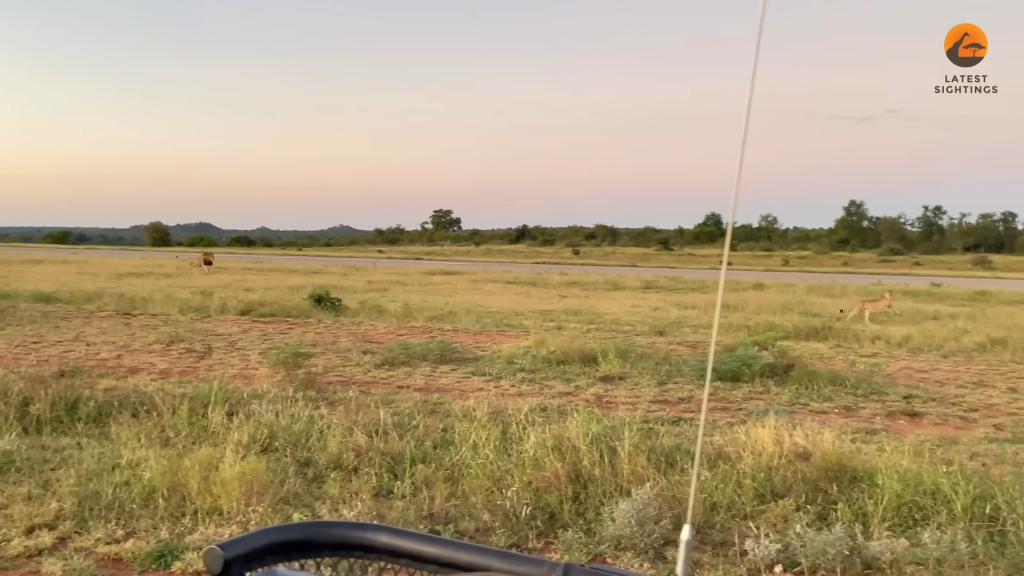
Proving a point
However, the lion appears ignorant of the imbalance and chases the cheetah with everything it’s got. Lions can reach a top speed of about 80 km/h.
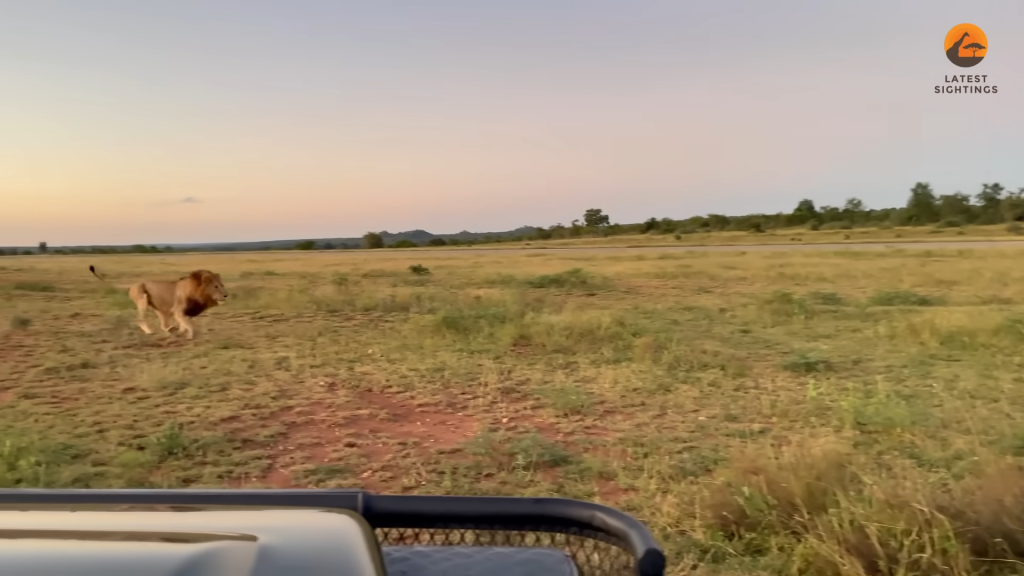
Neither species can sustain their top speed for a long distance. When hunting, they will stalk as close to their prey as possible, before a sudden burst of speed.
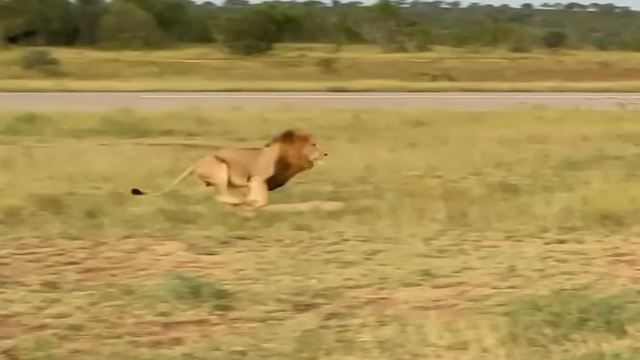
I just wanna talk to you
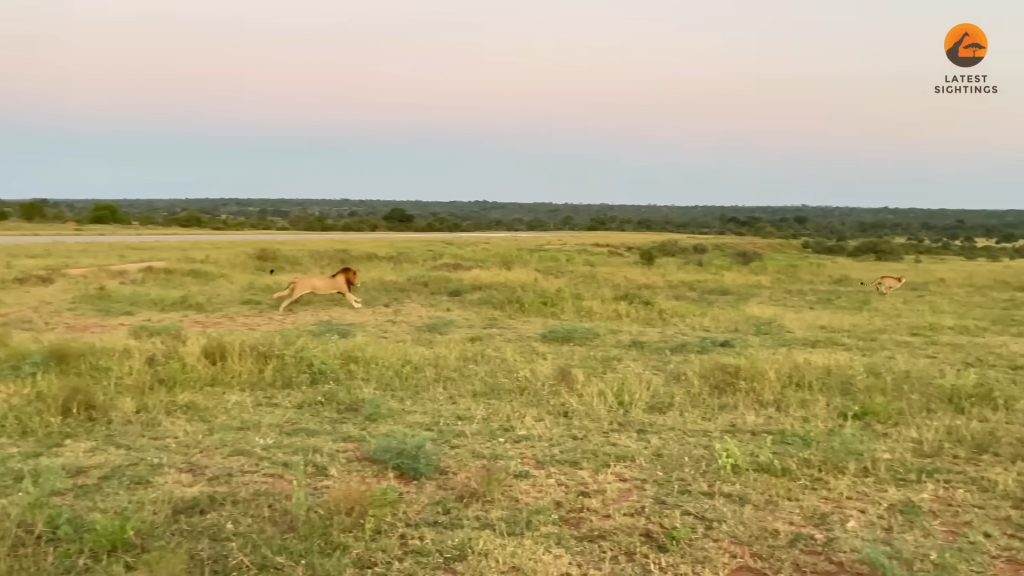
Obviously ignorant of its limited chances of success, the lion was determined to “have a word” with the cheeky trespasser.
Out of puff
Ultimately, the lion realised the futility of the chase. And, when the chase paused, the cheetah stopped to catch its breath.
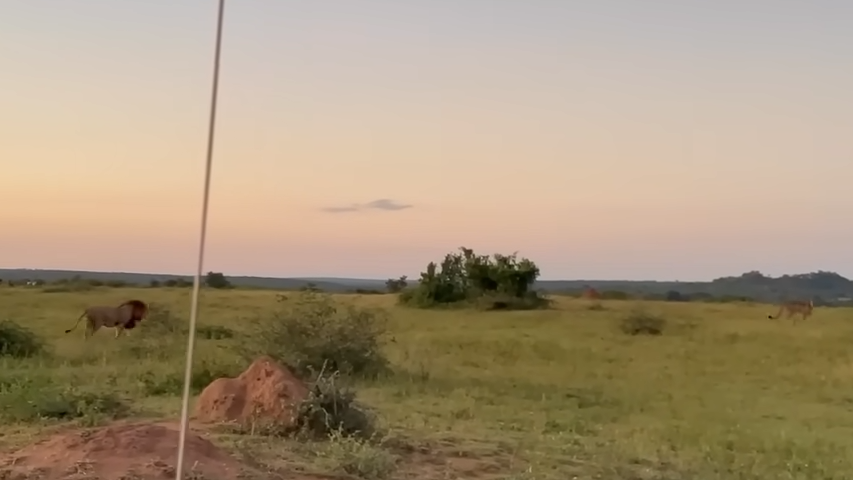
If at first you don’t succeed
With the exertion taking its toll, the lion nevertheless resumed its pursuit. Although now at a reduced pace.
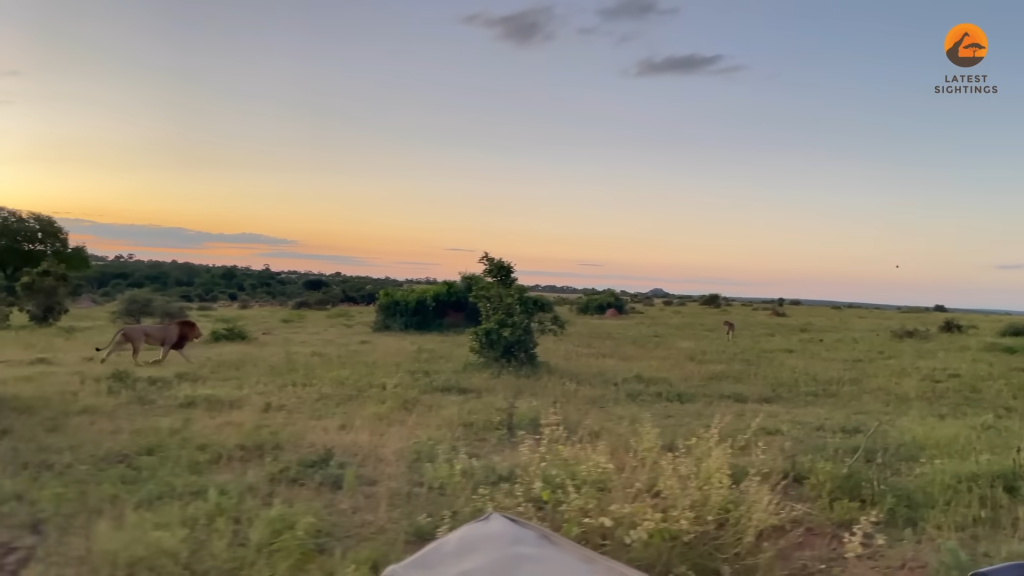
Marking territory
Ultimately, the lion had to concede to the faster cheetah. Perhaps to reassure itself of its dominance, it went on to scent mark a nearby bush.
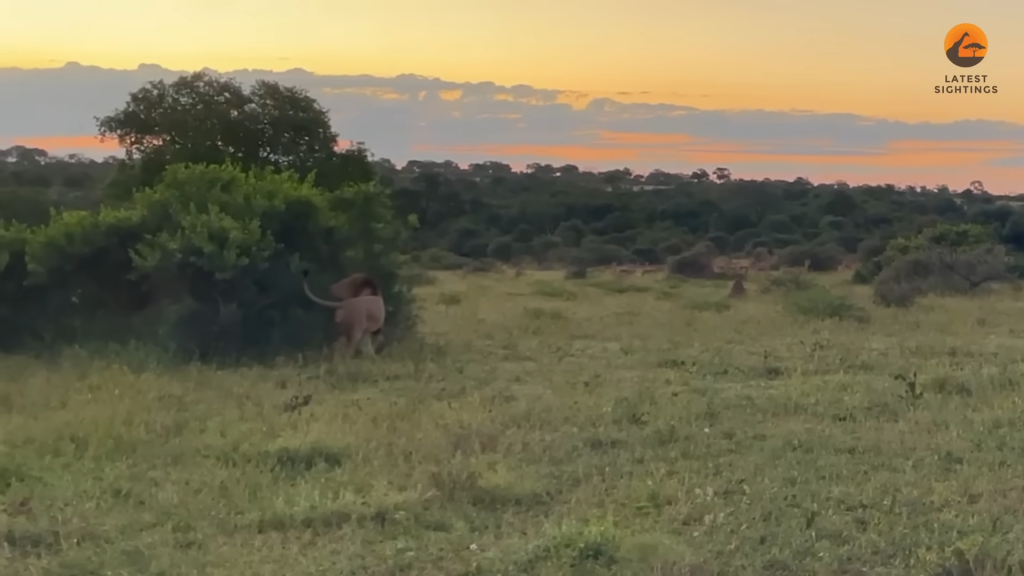
First by spraying urine, before rubbing its mane on the leaves.
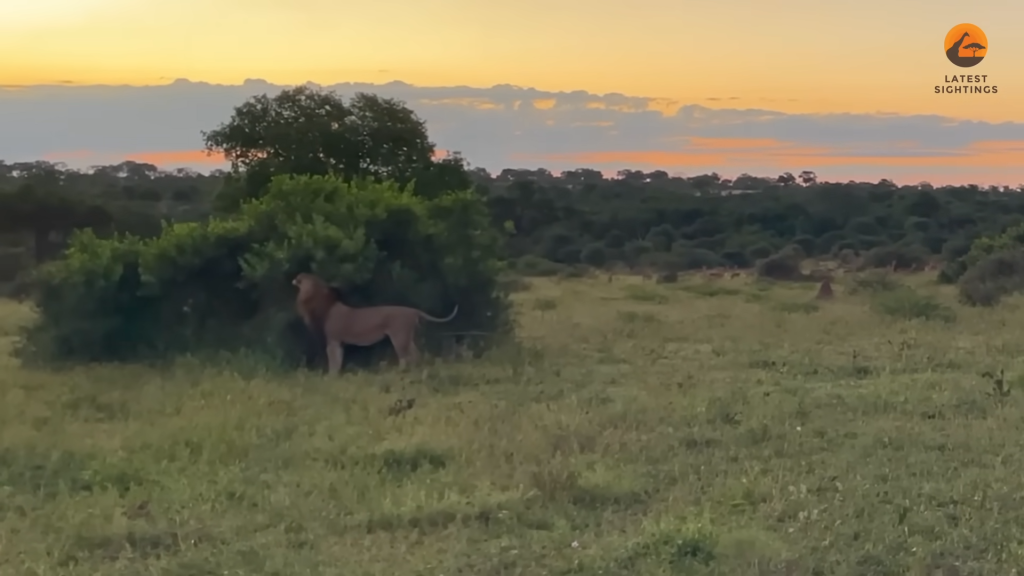
According to Dobbie, the lion then rejoined its compatriots and lay down for a well-earned snooze.
Home ground advantage
Most predators actively inhabit territories to ensure access to various resources necessary for survival. These resources ensure they can reproduce, find food and avoid fights.
Territory size will depend on the concentration of that species in the area and the abundance of prey. They will only defend a territory when it is economical, e.g. when prey is abundant and predictable.
Strategies used to defend territories include aggression, threat displays, scent marking and vocalisations.
Never a dull moment
While the incident ended well for the cheetah, it was a useful reminder that, according to Kevan, “In the wild, you can never have expectations because nature will amaze you in many ways.”
